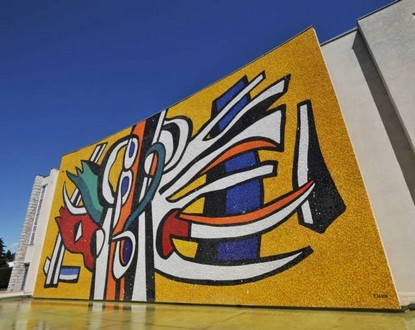After Sarah Morris’s “Mechanical Ballet,” the Fernand Léger National Museum continues to foster a dialogue between painting and architecture by initiating a diptych entitled “Metropolis, Fernand Léger and the City. The Integration of Painting into Architecture.” The first part, A Habitable Painting, runs until June 10.
Fascinated by the animation of Paris’s streets, their contrasts of shapes and colors, Fernand Léger saw the urban space as a territory to be reconquered. According to him, just like in the times of Byzantium or the cathedrals, visual artists must naturally find their place in the creation and embellishment of the city.
A Habitable Painting, the first part of the “Metropolis” exhibition, offered in Biot by the National Museum, focuses on the integration of color into urban space. It does so by relying partly on the stained glass, mosaics, tapestries, and ceramics permanently displayed within the museum’s spaces, and partly on the studies usually kept in the museum’s reserves, which, despite their fragility, will be accessible to visitors on this occasion.
The exhibition unfolds as a chronological reading of the projects for integrating painting into the city as envisioned by Léger from the 1920s until his death in 1955.


